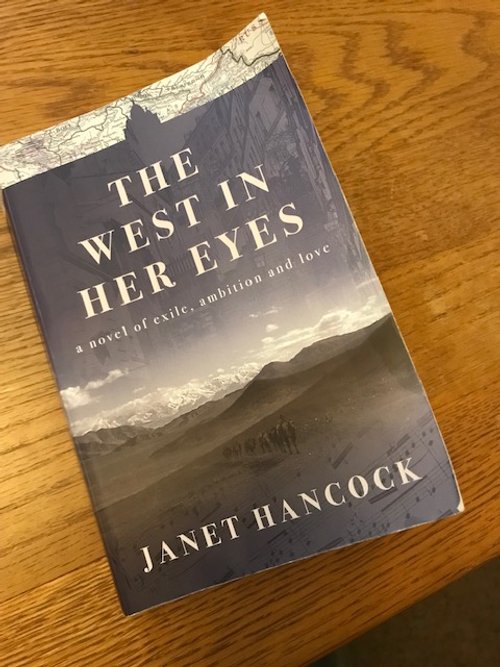Book Review: The West in Her Eyes, Janet Hancock, Resolute Books
‘The first movement of the Schumann Fantasie ebbs from her. When she lifts her head, Monsieur Tournon is looking at some point beyond her. ‘Good,’ he nods. ‘Technically I can find no fault…Try the opening theme again. Here is a man who believes he has lost the only woman he can love.’
This is an excellent read and a page-turner. The quote above is a taster.
Perhaps ‘excellent read’ is all I need to write for a book review? Nevertheless a few words will follow:
The West in Her Eyes transports the reader into the turmoil that enveloped Russia during the aftermath of the First World War, the overthrow of Tsar Nicholas, the murder of the Royal Family, and the October Revolution of 1917. Add to that the dismantling of the Ottoman Empire and the reconstitution of present-day Turkey and the scene is set.
All very interesting of course, but I was intrigued to discover how well this historical fiction gathered together partially-known strands and fragments of history and geography into a coherent whole that n years of secondary school failed to do with its dates of battles and maps to colour in!
But there’s more to this book than international intrigue
But there’s more to this book than international intrigue. The tension between tragedy and hope twists and turns throughout the novel via two principal characters, Esther and Anahid. Esther is a young Russian girl, a Jewess, who dreams of playing concert piano maybe in Paris. She is fleeing from the Bolsheviks with her family and meets Anahid, one of the many wives of Mirza Khan, in Tehran.
The desperate political background and the intricately woven plot are sufficient in themselves to make it worthwhile reading The West in Her Eyes, but what lifted this book off the shelf for me was the author’s ability not only to take the reader into the romantic adventures of both women, but also to describe the sights, smells, and sounds of the countries, towns, and cities surrounding the Black Sea such as Constantinople, as they seek to escape, refugees on the run, from a war-torn world; for example, when Esther and Anahid are escaping via a camel train from Kasvin in Persia to Erzerum in Anatolia:
‘On every horizon, purple mountains undulate…the day is as still as eternity, tinkle of sheep-bells floating…the road slopes into a valley of afternoon shadows and the scent of blue, wavering dung smoke. They cross a wooden bridge with no handrails, over a foaming river…ancient trees…roots curled in and out of cracked earth like arthritic fingers’
The heart of the story concerns the fortunes of Esther and Anahid, two women with the West in their eyes, their attempted escape from troubled times with Esther’s parents, and siblings and lovers included. How their hopes and dreams, fears and longings, are sometimes realised, and sometimes dashed, will, I think, move you to the final chapter.
